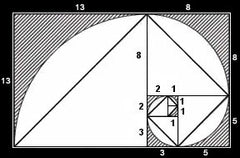
The interwebs of the soil
If you have ever walked into a new age bookstore you probably heard of sacred geometry. If you are not familiar with the concept, to put it simply, sacred geometry tries to ascribe sacred or symbolic meanings to certain geometric shapes that seem to frequently appear in nature. Where the followers of symbolic geometry get some of their street-cred, is that those shapes appear in nature all over the place and it seems like they are on to something.

I am sure with all the advancements in technology and our abilities to not only see into deep space but to look further and further into the micro-universe, we are going to see just as many amazing correlations in those worlds as well. Take for instance the images of the universe as a computer generated image of dark matter, and the enlarged image of some mycelium (the vegetative part of a fungus consisting of a mass of branching, thread-like roots -an important ingredient in Adaptogen Superfoods mushroom supplement, Adaptogenin™). They are strikingly similar, amazingly so that it raises a lot of questions and confirms many theories of how the universe is made and the form of this undefinable existence we call life. If you can imagine, this is also just how the world wide web is shaped as well, the network that links us all together in cyberspace.

Computer generated image of dark matter
How interesting is it that they all look so similar, yet in orders of magnitude they are sized so differently. Just as you can go up in size from the inch to the foot to the mile, can you even fathom the size difference when you start counting with the light-year as the smallest increment? With this unmistakable pattern, it begs the question, if the internet is such a wonder when it comes to how much faster we can trade information compared to a just a hundred years ago and how truly remarkable the interweb is, how sophisticated is the network of mycelium, when it has been that way and continually evolving for hundreds of millions of years?!

Mycelim under a microscope
Mycelium can be as thin as only one cell wall thick, yet it can not only survive, but thrive even when under attack by a potential pathogen. It can communicate along the incredibly thin length of the mycelium to draw up its resources and defenses to help battle the threat. Amazingly beyond that, surrounding plants can use the mycelium like we would the phone to warn our neighbor of a coming storm. Ren Sen Zeng of South China Agricultural University in Guangzhou found that when plants are attached by harmful fungi, they release chemical signals into the mycelial network that warn their neighbors. All this done in a network that can be as tiny as one cell wall thick! It makes you wonder, for the next technological boom forward, should we be looking to Mark Zuckerburg, or the fungi of our very own mother earth?